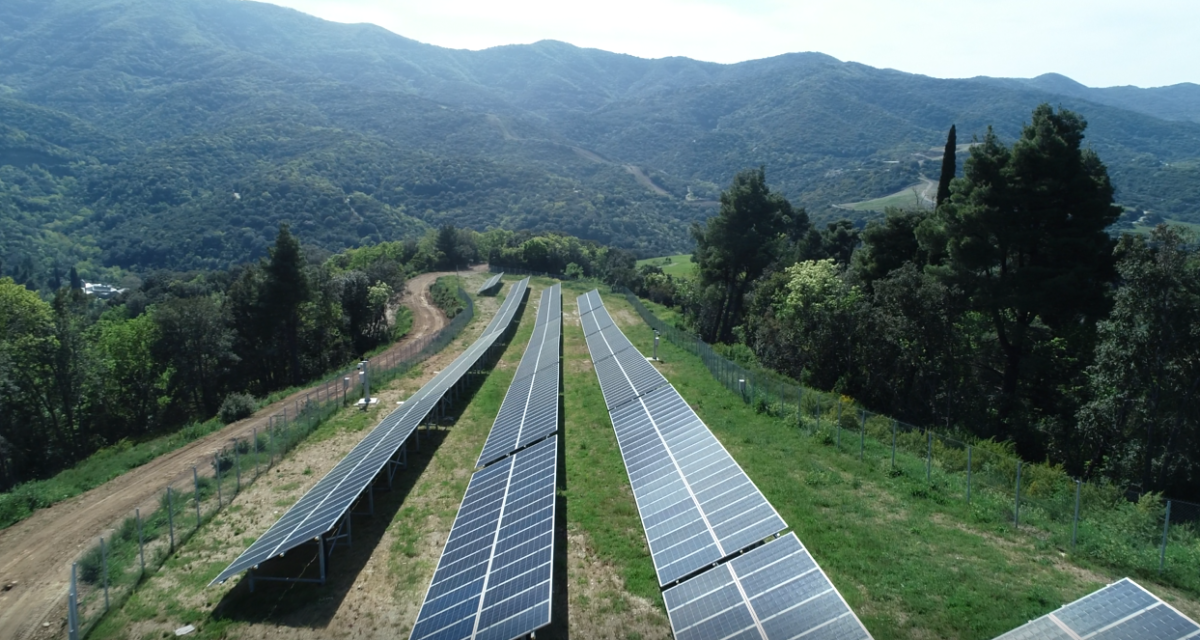
Newsroom / Center News
Beyond Curtailments: Unlocking Greece's Renewable Energy Potential
In recent years, the EU has been striving toward achieving net-zero emissions by 2050 across all member states. For Greece, this ambitious target has accelerated the integration of Renewable Energy Sources (RES) into its energy mix, with a primary focus on electricity generation. While this shift toward a greener electricity mix is necessary to align with the EU’s climate goals, it has also revealed critical deficiencies in national infrastructure that hinder the country from fully harnessing the potential of non-dispatchable renewables like solar and wind.

According to the latest report published by DAPEEP (March 2025), Greece’s renewable energy profile is dominated by photovoltaic (PV) installations, totaling 8.83 GW, followed by onshore wind at 5.31 GW. In the interconnected system, PV accounts for 6.83 GW, while onshore wind represents 1.02 GW. Although this growth in RES capacity marks a positive step toward decarbonization, it has also led to increasing curtailments of renewable energy in the mainland system. Due to PV oversaturation, curtailments typically occur during periods of high solar irradiation—periods that also coincide with low electricity demand. This mismatch between PV production and consumption results in the so-called “Duck-to-Canyon Curve” effect on wholesale electricity prices, a trend that becomes more pronounced each year.
Accurately quantifying curtailed renewable energy in Greece has been challenging. SCADA (Supervisory Control and Data Acquisition) systems became mandatory in December 2024 for RES plants with capacities over 400 kW. Prior to that, most producers lacked the necessary equipment to record precise data, making it difficult to calculate the exact volume of curtailed energy. Currently, only IPTO (the Greek Independent Power Transmission Operator) can provide verified data on curtailment events—specifically their duration and timing, though not the exact quantities for each plant.
Despite these limitations, estimates suggest that RES curtailments in Greece approached 1 TWh in 2024. According to RAE, curtailments occurring between 8:00 a.m. and 5:00 p.m. accounted for approximately 900 GWh. Moreover, data from January to May 2025 indicate that this figure has already been surpassed. The continued expansion of RES capacity will only exacerbate the issue.
Curtailments, beyond simply wasting green energy, translate into direct economic losses for RES producers by depriving them of revenues that would otherwise be realized. For large-scale PV and wind projects, the inability to monetize output threatens project bankability and complicates financial planning for both new and operational assets. Quantifying the exact economic impact of RES curtailments remains challenging due to data transparency issues. A key obstacle is that IPTO does not publicly disclose which specific PV parks are curtailed and when, making it impossible to identify whether the curtailed assets are operating under Feed-in Premium (FiP) contracts.
Without addressing key structural challenges — namely, limited grid capacity, inadequate interconnections with neighboring countries, and the lack of both short- and long-term energy storage—curtailments will inevitably continue to rise. IPTO has outlined an investment plan through 2034 focused on grid reinforcement and expansion. Even so, energy storage remains the most immediate and scalable solution to mitigate curtailments, but deployment continues to lag behind targets. As outlined in the Greek National Energy and Climate Plan (NECP) 4.3 GW of battery storage and 1.9 GW of pumped hydro will be required by 2030 to achieve system flexibility. Investment risks—including technology uncertainty, evolving market rules, and unclear revenue streams—are currently hampering the financing of large-scale battery storage projects.
While the supply side garners much attention, demand-side flexibility and grid smartification remains underutilized. Equally important is fostering consumer awareness, unlocking the potential of demand-side management.
The current trajectory—marked by surging RES capacity but lagging infrastructure—risks reaching an unsustainable tipping point. Policymakers face a strategic dilemma:
Should there be a slowdown in new projects, should there be an acceleration of investments in storage, grid upgrade, demand management?
Prioritizing storage deployment, grid digitalization, interconnections, and flexibility mechanisms, while applying more targeted and conditional approval processes for new PV projects is a balanced path for Greece. The regulator must play a proactive role in coordinating grid and market reforms, while the government must expedite permitting and unlock financing through blended finance tools. Private investors and banks should align capital allocation with long-term system value, moving beyond pure volume growth. The development of new business models will be essential to ensure profitability amid growing curtailments.
Greece stands at a critical juncture in its energy transition. While the rapid growth of renewables is a commendable step toward climate neutrality, it must be matched with equally ambitious investments in grid infrastructure, storage, interconnections, and demand-side flexibility. Without these, the risk of escalating curtailments will undermine both the economic and environmental value of renewable energy. A coordinated and forward-looking strategy—embracing all actors in the energy ecosystem—is essential to ensure that Greece not only meets its EU obligations but also builds a resilient and sustainable energy system for the future.





